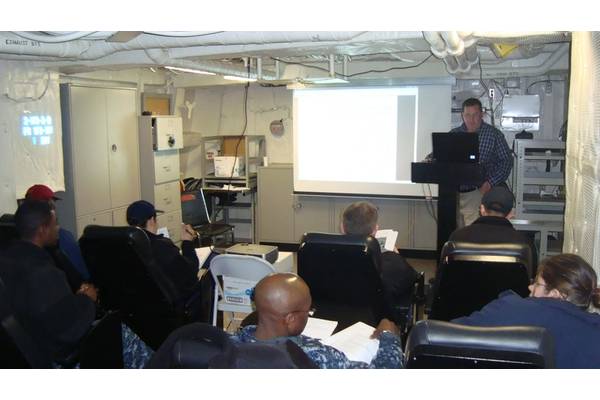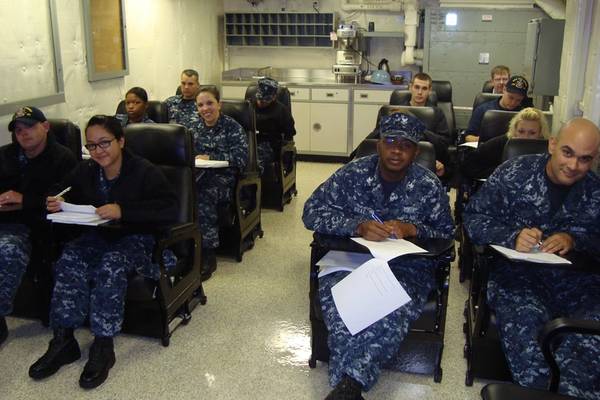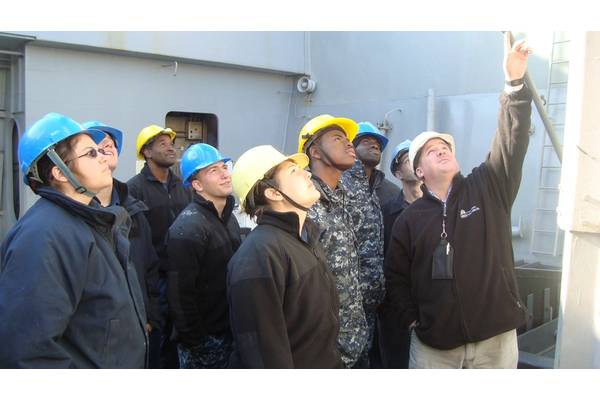Improving US Navy’s Deck Systems Operations
Posted by Eric Haun
July 21, 2015

Photo: Cape Henry Associates, Inc.

Photo: Cape Henry Associates, Inc.

Photo: Cape Henry Associates, Inc.
As its mission centers on ships going to sea, the U.S. Navy relies on the execution of evolutions on weather decks where equipment and personnel are often exposed to the sea and its dangers. It is no surprise that this is an important aspect of shipboard life with crews devoting significant funding, maintenance and training toward ensuring proper operation and execution of deck systems and events ranging from the launch of a small boat to the launch and recovery of landing craft. Despite this historic need within the fleet, the U.S. Navy did not place emphasis on deck systems until recently.
Modeling a new training concept from the Ballistic Missile Defense Self-Assessment Groom Training (SAGT) method and procedures, the U.S. Navy launched the LPD 17 Class Ship Deck Self-Assessment Groom Training (D-SAGT) in 2010 under the direction of Kelly Schneider. Implemented by PMS 317 across the entire class, the D-SAGT employs a blended learning solution by combining “classroom learning” with “hands-on training” to convey theory and knowledge to multiple ratings. Provided by a Mobile Training Team (MTT), the D-SAGT MTT utilizes the “own-ship” as the classroom, saving hundreds of thousands of dollars versus brick and mortar solutions, while providing sailors with training on their own systems.
The D-SAGT consists of two phases. The first phase involves reviewing all associated material and conducting a detailed assessment of the deck systems. The second phase incorporates high quality training on selected systems with lesson plans, trainee guides, and examinations. This system of training complements the ongoing evolution-based training provided by the Afloat Training Groups as it helps maintain system readiness and preparedness to conduct deck evolutions across all ship classes.
“We know from course feedback that D-SAGT has provided immeasurable value to our sailors,” stated Pete Brennan, the D-SAGT MTT lead. The U.S. Navy must agree as it has embraced the process and continues to expand the program. Continuing from the success of the pilot delivery aboard USS New York (LPD 21) in May of 2010, more than nine ships from the LPD 17 Class have completed the D-SAGT, leading to its designation as a Program of Record, which has led to planned implementation across all major surface ship classes.
The success of the program prompted the U.S. Navy, under NAVSEA PMS 339 sponsorship, to pursue the development of training curricula for the LHD 1-8, LSD 41/49, DDG 51, and CVN 78 class of ships as well as add additional instructors to the Atlantic and Pacific Afloat Training Groups to support delivery of the training. “This endeavor is a success story between government and industry. We are training our sailors in a cost-effective manner while ensuring they are receiving the best training solution available,” stated Kelly Schneider, PMS 378/Future Carriers Training Manager.
By implementing the training effort, the U.S. Navy addressed a crucial aspect of shipboard operations that can help support mission success. In the long run, this will only serve to improve the overall operations of the fleet.





